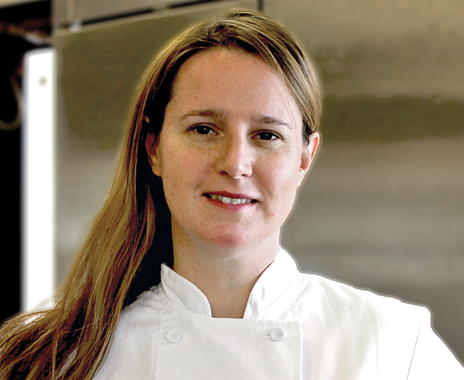There was a time when salads at quick-service restaurants were a joke, consisting of wilted lettuce and over-ripe vegetables pre-packaged with heavy, unhealthy dressings. These days, however, customers are more interested in nutritious menu options, and quick-serve operators are meeting that demand with fresh, innovative salad offerings.
Au Bon Pain is one of those brands taking a fresh look at salads. The fast casual recently revamped its salad menu with nine new items, increasing the size of the salads and boosting their health and freshness quality. Executive chef Katherine See talks about that revamp and how operators can maximize the success of a salad menu in the limited-service industry.
What was the process of developing a new salad menu like?
Over the past six to eight months, we did pretty involved analysis of other quick-service restaurants, even small and independently owned restaurants and cafés, to see what was out there and how our salads stacked up. To be fair, we were falling a little short. We had the same size salad as we’ve had for years, and what we saw on the marketplace is that the consumer wants a larger salad offering and cares much more about the components that are in their salad.
What are some interesting, outside-the-box flavors and ingredients that work well in salads today?
Salad is a great vehicle to deliver on those ethnic flavor profiles that we see popping up all over in quick service, especially with the advent of the food truck and food influences on our guests. Salads are a way to put a small quantity of a nontraditional item on a plate. It doesn’t need to be cucumbers and diced tomatoes and iceberg lettuce; you can be inventive with your greens. It doesn’t have to be croutons; it can be toasted almonds or dried cranberries.
When guests customize salads, is it better to offer more ingredients or to try to be selective?
We definitely try to be selective. A lot goes into consideration for it. One is our distribution network; for salads, you need to have the freshest ingredients, so we really focus on the quality. We’re not getting in under-ripe avocados or under-ripe tomatoes; we’re working very closely with our vendors. So that’s a big part of it. We very rarely bring in multiple SKUs just for a salad. You worry about shelf life in terms of fresh produce and toppings.
What salad greens work really well in a quick-serve environment?
Heartier lettuces definitely work better. Kale holds up really well for quick service. It’s a hearty green. The heartier blends of field greens work. Romaine, obviously, is a good go-to. It gets a little trickier when you get into the smaller greens, like if you get into mâche or micro-greens. We like a lot of baby arugula, but I would think in most quick serves, it would be a difficult green to keep.
What’s the best way to do dressings so they don’t overwhelm the salad?
We stick to a 2-ounce portion, which I think is pretty key. And I think you need flavors that complement the salad. We give recommendations of what dressings we think taste good with our salads, but of course guests can personalize in any way they want. It’s sometimes good to give guests a roadmap so they don’t end up masking the flavors. We do a lot of work on our dressings, and keep a combination of low-fat and traditional versus new flavors.
How do you balance flavor with health in salad dressings?
Everyone is going to have a Caesar and a blue cheese dressing for the guest, but we try to balance that. A lot of development goes more toward vinaigrettes now. When we think about putting fat in dressings, we try to do smart choices with that. Using Greek yogurt instead of some other component is great; it’s protein-packed and creates a creamy dressing. We’ll put avocado in our dressings. We have a new avocado dressing that came out. Again, it’s a healthy fat that also has a creamy texture. When I’m developing dressings, I go back to the basics. I’m making it with four or five ingredients like I would at home.
How can you efficiently source quality products for salads?
The key there for us is working really closely with our vendors. For example, we use Taylor Farms for our romaine, and we know exactly what that looks like in terms of when that lettuce was harvested. We know every part of the supply chain to make sure we’re getting the most shelf life on our product when it gets to our cafés. You can definitely source locally; our cafés all use local produce distribution. With produce companies, you have that relationship with them where you can call up and say, “These three cases of lettuce are poor quality; come and get them and bring me back new lettuce.”






